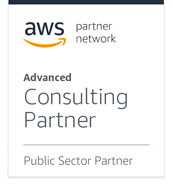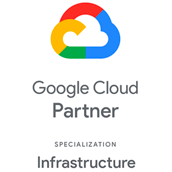Cloud Selection
Takumi Cloud offers comprehensive services to assist businesses in their cloud selection and journey, addressing the strategic, technical, and operational aspects of cloud adoption and optimization.
Help me choose
1. The Cloud Journey
Strategy and Planning
Takumi Cloud helps organizations define their cloud strategy, aligning it with business objectives to ensure the cloud journey supports growth, innovation, and efficiency. This includes assessing current IT infrastructure, determining the best-fit cloud models (public, private, hybrid, multi-cloud), and planning migrations to achieve desired outcomes.
Cloud Readiness Assessment
Current State Analysis: Evaluating the existing IT infrastructure, applications, data, and processes to understand the organization's current technological landscape.
Requirements Gathering: Identifying business and technical requirements that will inform the cloud strategy. This includes performance, scalability, availability, security, and compliance needs.
Cloud Strategy Development
Objective Alignment: Ensuring the cloud strategy aligns with broader business goals, such as increasing operational efficiency, enhancing customer experiences, or enabling innovation and growth.
Cloud Model Selection: Advising on the most appropriate cloud deployment model (public, private, hybrid, multi-cloud) based on the organization's needs, preferences, and constraints.
Cloud Economics and Business Case
Cost-Benefit Analysis: Conducting a thorough analysis of the costs associated with moving to the cloud versus the expected benefits, including cost savings, operational efficiencies, and potential revenue impacts.
ROI and TCO Analysis: Estimating the return on investment (ROI) and total cost of ownership (TCO) to justify the cloud investment and guide budgeting decisions.
2. find a best fit
Cloud Selection
Cloud Model Selection is a critical step in an organization's cloud journey, involving the choice among various cloud deployment models to best meet the specific needs, goals, and constraints of the business. This decision impacts the architecture, scalability, cost, security, and compliance of an organization's cloud environment. The primary cloud deployment models include public cloud, private cloud, hybrid cloud, and multi-cloud.
Request your quoteHybrid Cloud
This combines public and private cloud elements, allowing data and applications to move between the two environments.
Our experts can help you navigate the complexities of hybrid cloud environments, which combine elements of both public and private clouds. Our experts explore hybrid cloud solutions from leading providers like AWS Outposts, Azure Hybrid, and Google Anthos, outlining the advantages of hybrid cloud adoption, such as increased flexibility and seamless workload mobility.
Public Cloud
These provided over the Internet by third-party providers like Amazon Web Services (AWS), Microsoft Azure, and Google Cloud Platform (GCP), offering scalable, elastic computing resources.
We dive into the world of public cloud solutions and offer in-depth insights into the scalability, flexibility, and cost-effectiveness of public clouds; helping you understand how these solutions can meet your business requirements.
Private Cloud
This is typically dedicated to a single organization, hosted either on-premises or by a third-party provider, offering greater control and security.
Our experts delve into private cloud providers like VMware, OpenStack, and IBM Cloud, highlighting their features and capabilities to assist you in determining if a private cloud is the right choice for your organization.
Staying at the forefront Cloud Transformations
 Amazon Web Services
Amazon Web Services
 Microsoft Azure
Microsoft Azure
 Docker
Docker
 Kubernetes
Kubernetes
 Google Cloud
Google Cloud

Our partners
Google Cloud, Amazon AWS, Microsoft Azure, and Kubernetes trust us to implement their technologies in for our clients.



Next Steps ...

-
Governance and Compliance Framework
Policy Development: Establishing cloud governance policies to manage cloud usage, cost, security, and compliance effectively.
Compliance Strategy: Ensuring the cloud strategy adheres to relevant industry regulations and standards, incorporating necessary controls and compliance mechanisms.
-
Risk Assessment
Policy Development: Identifying and assessing potential risks associated with cloud adoption, including security, compliance, and operational risks.
Compliance Strategy: Developing strategies to mitigate identified risks, ensuring a secure and compliant cloud environment.
-
Cloud Architecture and Roadmap
Architecture Design: Defining a high-level cloud architecture that supports the organization's technical requirements and business goals.
Migration Roadmap: Creating a phased migration roadmap that outlines key milestones, timelines, and resources required for a smooth transition to the cloud.
-
Change Management and Skill Development
Organizational Change Management: Planning for the organizational changes that accompany cloud adoption, including roles, responsibilities, and workflows.
Training and Enablement: Identifying skill gaps and developing training programs to equip employees with the necessary knowledge and skills for working in a cloud environment.
We're committed.
We succeed only when YOU succeed - Plain and Simple.
Total transparency
Over not under communication
Experts; not beginners are with you in your journey.
We can run fast or take a brisk walk.
